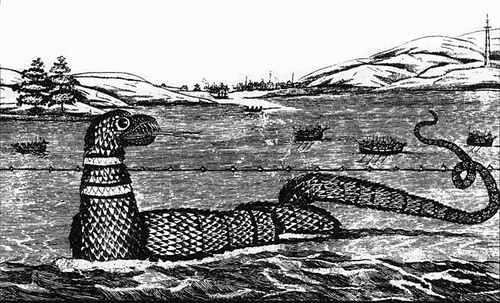
1817 saw a rash of sea-monster sightings off the coasts of Maine and Massachusetts. So strong was the craze that in August the New England Linnaean Society announced it had acquired a young sea serpent, which it dubbed Scoliophis atlanticus.
As it turned out, the specimen was a deformed terrestrial snake. Skeptics say this proves that the Gloucester monster didn’t exist. In fact, it only confirms that snakes aren’t sea serpents.




